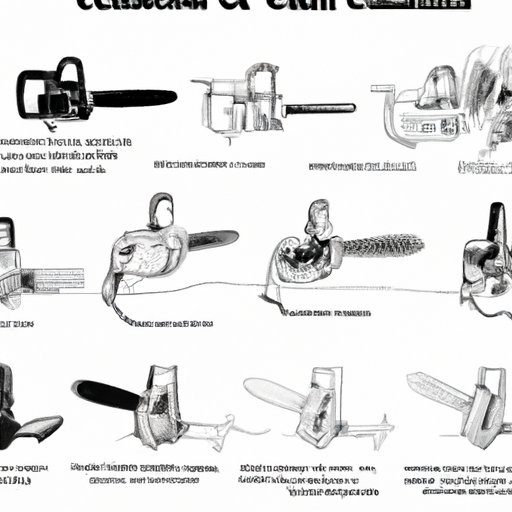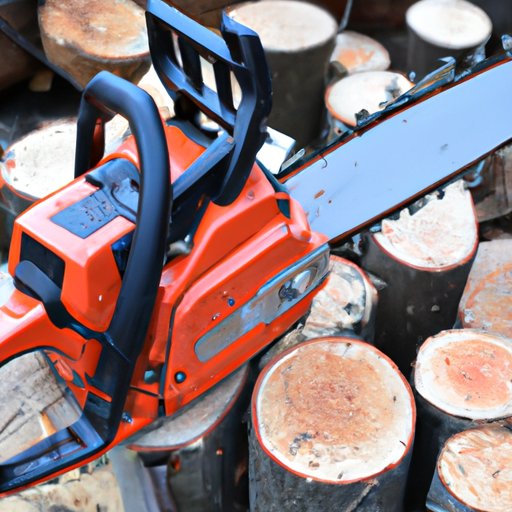Chainsaws: How They Were Invented and Why
Chainsaws are powerful tools that are widely used in various industries, including forestry, construction, and woodworking. They are used to cut through trees, limbs, and lumber with ease. A chainsaw is a portable, mechanical saw that has a cutting chain attached to a guide bar. The chain is driven by a gasoline engine or an electric motor, and it rotates at high speeds to cut through wood. In this article, we will explore the history of chainsaws, their evolution, and why they were created in the first place.
The History of Chainsaws: How They Were Invented and Why
The origins of chainsaws can be traced back to the pre-industrial revolution period, where two-person saws were used to cut down trees. However, in the late 18th and early 19th centuries, a more efficient means of cutting wood was needed. The first chainsaw-like tool was invented in the 1830s by a German orthopedic surgeon named Bernhard Heine. His tool was called an osteotome, and it was used for bone surgery.
Over time, various inventors improved upon the original design of Heine, and in the 20th century, chainsaws became more widespread. In the mid-1920s, Andreas Stihl introduced the first gasoline-powered chainsaw, which was designed for use in forestry. The chainsaw quickly became an invaluable tool in the timber industry.
From Logging to Limbing: The Evolution of Chainsaw Technology
In the early years, chainsaws were primarily used in the logging industry. However, as technology advanced, they became lighter, more efficient, and more versatile. Today, chainsaws are used in a wide variety of industries, including carpentry, construction, and firefighting.
Chainsaw technology has come a long way since the early days. Modern chainsaws are designed to be more lightweight and ergonomic than their predecessors, making them easier to handle for extended periods. They are also equipped with safety features, such as anti-vibration systems and chain brakes.

The Birth of Chainsaws: A Timeline of Their Creation and Development
Over the years, chainsaws have undergone significant changes, with numerous individuals contributing to their development. In 1830, Bernard Heine introduced the osteotome, the first chainsaw-like tool, which was used for medical purposes. In 1926, Andreas Stihl invented the first gas-operated chainsaw, which was designed for forestry work. In 1946, the first one-man chainsaw was introduced by Stihl to make the work easier for loggers. These innovations paved the way for even more advancements in chainsaw technology.
Why the Chainsaw Was a Game-Changer for the Timber and Logging Industry
Before the advent of chainsaws, logging was a labor-intensive and dangerous process that required teams of men wielding two-person saws to cut down trees. The invention of the chainsaw revolutionized the industry, making tree felling safer, more efficient, and less costly.
Chainsaws made it possible to cut through large trees in a fraction of the time it took with traditional methods. This led to increased productivity and reduced labor costs. Additionally, chainsaws allowed loggers to work faster and more accurately, resulting in smoother and more precise cuts. Finally, the elimination of two-person saws and the introduction of chainsaws reduced the number of injuries and deaths in the logging industry.
The Simple Idea That Changed the World: The Invention of the Chainsaw
The invention of the chainsaw changed the world forever. It introduced a new level of speed and efficiency to many fields, including forestry, construction, and woodworking. Many individuals, including Bernhard Heine and Andreas Stihl, contributed to the development of this powerful tool.
Chainsaws played a significant role during the Industrial Revolution. Their ability to cut through wood quickly and accurately made them indispensable tools for a wide range of industries. Chainsaws have since become an essential tool for many industries worldwide, allowing for efficient and precise cuts that save time and money.
How Chainsaws Revolutionized Woodworking and Changed the Way We Build Things
Woodworking has been a traditional trade for centuries, with hand tools such as chisels and saws being used to shape and refine wood. However, with the introduction of chainsaws, woodworking has entered a new era of speed, efficiency, and precision.
Chainsaws are used extensively in woodworking projects to cut through thick pieces of wood quickly. They are also used to make precise cuts, such as when cutting intricate designs on furniture or carving sculptures. Chainsaws have made it possible to build and shape things that were previously impossible with traditional woodworking tools.
Conclusion
Chainsaws are an incredible invention that has revolutionized the way we cut wood and build things. From their humble beginnings in medicine, chainsaws have become an integral tool in various industries worldwide, including forestry, construction, and woodworking. The history and evolution of the chainsaw are fascinating, and it is clear that this tool will continue to play a vital role in many industries for years to come.
If you want to learn more about the history and evolution of chainsaws, we recommend checking out books, documentaries, or online resources that offer in-depth coverage of the topic.
